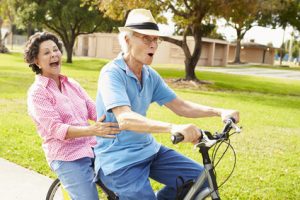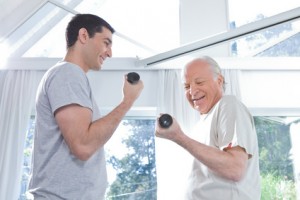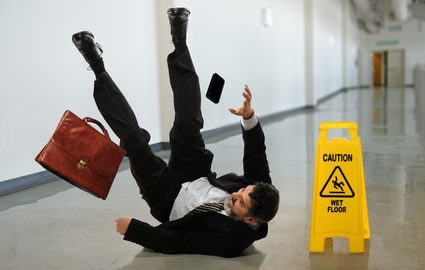For older adults, falls represent a significant health risk. As we age, our bone and muscle health tends to worsen (often due to lifestyle factors), making us more prone to fractures on impact with the ground. For some, simply getting off the ground following a fall is incredibly demanding and potentially impossible, leaving those who live alone at risk for developing complications such as pressure sores.
The best way to manage a fall is to prevent it from happening.
Luckily researchers have discovered several indicators that suggest who (you, or your parent/grandparent), may be at risk for a fall. In recognizing these signs early and getting proper treatment, older adults can maintain an independent lifestyle and stay in their homes longer than might be otherwise possible.
A meta-analysis (a type of study that systematically pulls data from many studies of similar methodology and attempts to combine the data to create massive sample sizes and theoretically better results) conducted in 2010 identified many modifiable and non-modifiable factors that suggest an increased risk of falls. For simplicity, they are ordered from most to least significant. The numbers represent an “Odds Ratio” which is a way for statisticians to express the likelihood that one characteristic is linked to another. While not a perfect explanation, in this table you could interpret someone who has had a stroke, for example, to be 2.94 times more likely to be a “faller” than someone who has not had a stroke. It should not, however, be thought that a person who has a stroke is 2.94 times more likely to fall. It is a subtle distinction that only matters to weirdos like me.1
Risk Factors:
- 3.68 – Walking problems
- 3.65 – Cognitive impairment
- 3.20 – Use of walking aid (cane, walker etc)
- 3.07 – History of falls
- 2.94 – Previous stroke
- 2.63 – Physical disability
- 2.14 – Dizziness/vertigo
- 1.88 – Fear of falling
- 1.59 – Living alone
- 1.45 – Vision issues
- 1.44 – Use of sedatives
- 1.19 – Use of blood pressure medication
- 1.15 – Age per 5 year increase
- 1.06 – Each prescription medication
Now, what to do with this information.

For older adults (or those of you with parents or grandparents over the age of 65), it is important to be aware of changes that occur with aging. While maybe ‘normal’, some of these things are not ok. Balance does not NEED to get worse. Strength does not NEED to be decreased. There is no rule about this. Older adults are perfectly capable of maintaining high levels of strength, balance, and endurance well into retirement. By recognizing the signs and seeking appropriate treatment, older adults can maintain independence far longer than could be expected without help.
- Observe your partner/parent/grandparent/self. Make note of things like abnormal walking pattern, decreased walking speed and cognitive changes (being more than just a little forgetful)
- Count your medications. It is not uncommon for older adults to be on 10 or more prescription medications at one time. Fall risk increases with each medication, and anything more than 5 is considered a problem
- Take the Falls Efficacy Scale quiz (link provided). Scores greater than 6 indicate a fear of falling, which is a risk factor for falls
- Be aware of any diagnosis’ you or your loved one may have. Conditions such as Stroke, Parkinson’s Disease, Diabetes, and Rheumatoid Arthritis have all been shown to increase fall risk
- Do a safety check around your home. Ensure proper lighting (this includes nightlights for bathroom visits in the night) and get rid of clutter.
- If you notice some of these issues, seek out treatment from a qualified professional such as a Physiotherapist. We can help you or your loved one with an exercise program that will increase strength, balance, and endurance, which can help you or them stay healthy and independent for years to come
Tim Childs, PT
Registered Physiotherapist
MScPT, BA Kin

References
- Deandrea S, Lucenteforte E, Bravi F, Foschi R, La Vecchia L, Negri E. Risk factors for falls in community-dwelling older people. A systematic review and meta-analysis. 2010;21(5):658-668

